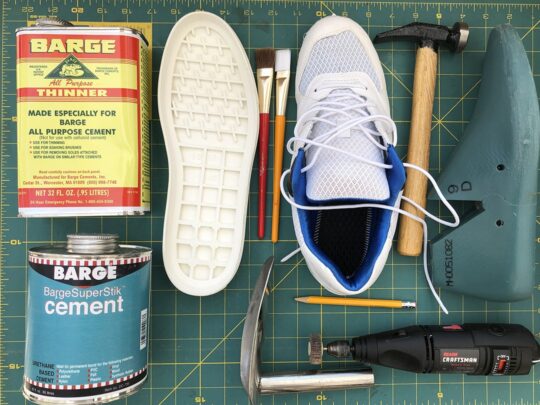Outsole Cementing Process
DIY outsole cementing: step-by-step process
Today in the workshop, we are finishing the assembly of our sneaker test pattern. Here, we will cover the step-by-step process of preparing the outsole units and uppers for cold cementing and sole stitching. We don’t have a shoe factory with presses and heat tunnels so we are going to adapt the cold cement process for the home workshop and DIY shoemaker.
Sneaker sole cementing tools
Before we cement together our sneaker, we will need to collect some tools. For this process, we are going to use as many common household tools as possible.
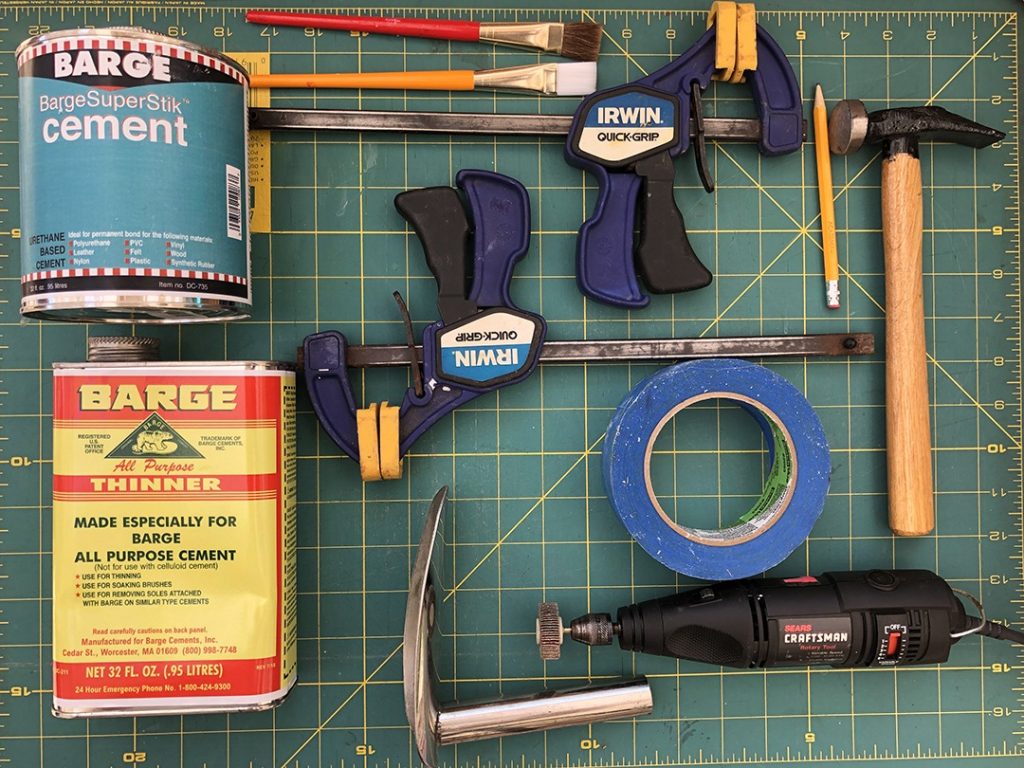
Sneaker Sole Cementing Tools
- Cement (I like Barge)
- Cement thinner (Make sure you have the correct thinner for your cement!)
- Brushes
- Shoehorn (if you are making a Strobel shoe)
- Sandpaper or rotary buffing tool
- Pencil
- Flat-faced hammer
- Clamps
- Non-staining tape
Sneaker parts
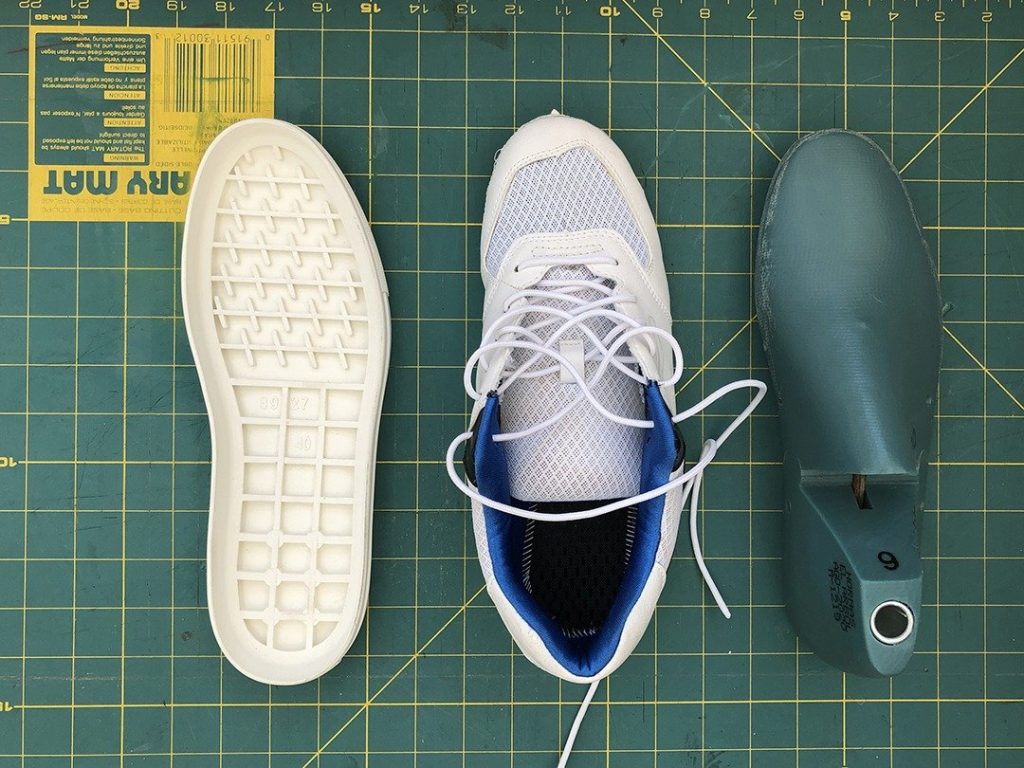
You need your upper, your last, and your outsole unit. If your upper has laces, make sure you have threaded the shoelaces or have some temporary laces installed.
Washing your sneaker outsoles
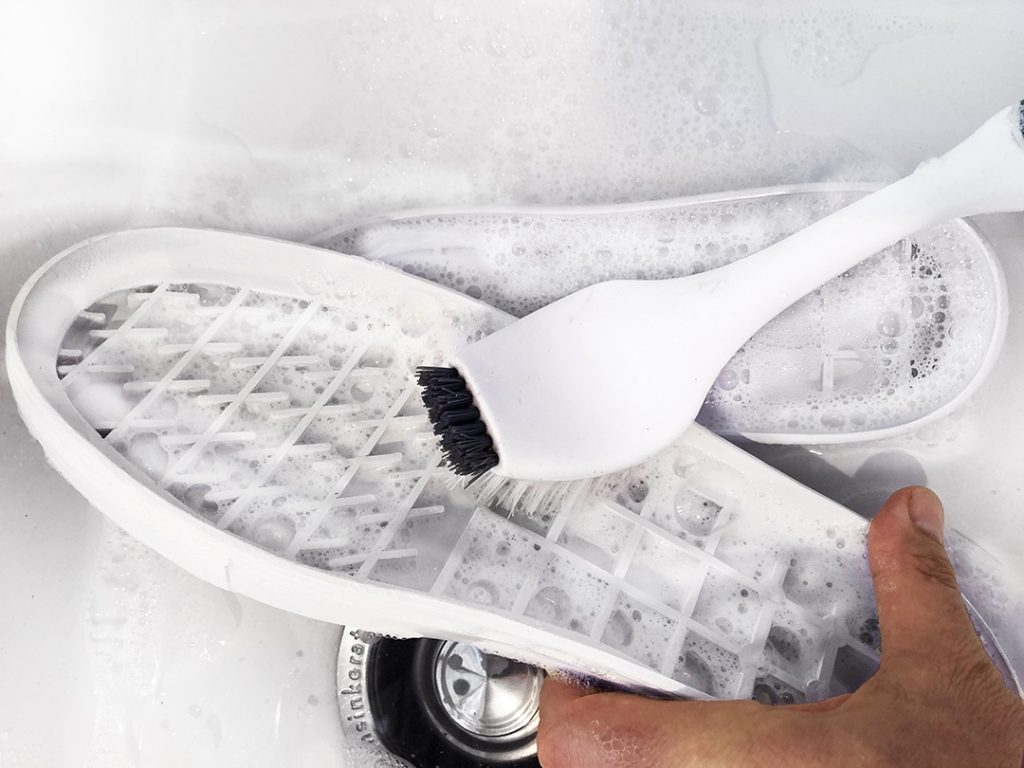
Yes! You should wash your outsole parts. During the manufacturing process, the production mold is sprayed with a lubricant. The lubricant spray helps the rubber flow in the mold and allows the hot metal and rubber to be separated once the molding is complete. Before you can bond your parts, give them a hot soapy bath.
Lasting your uppers
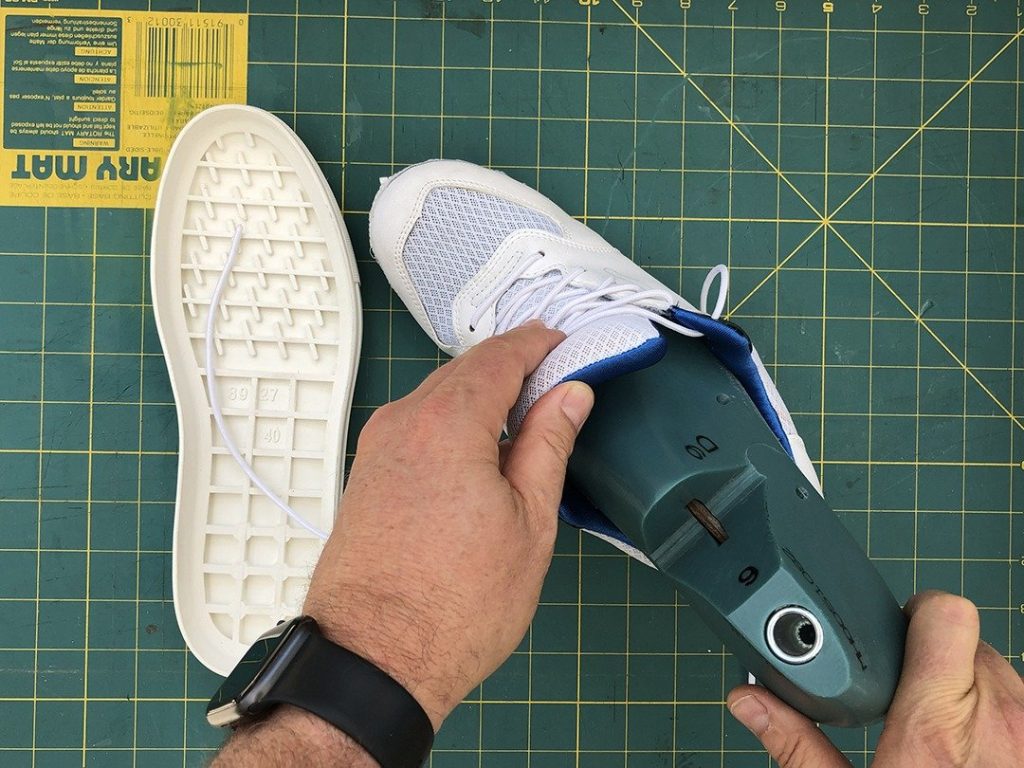
If you are building a board-lasted shoe, you may already have your uppers lasted and ready. In this case, I will show you how to prepare a Strobel upper. Carefully slip or force the last into the upper. If the upper is very tight, you may use a damp towel and a little heat to soften the upper. I have a proper industrial shoehorn to help. Work slowly so that you stretch the upper without damaging the material or stressing the seams. Make sure the shoelaces are loose. If you have a hinged last you can “break” the last to get it inserted, then carefully close the last to tighten the upper.





With the last completely inside, tension the laces bottom to top. Pull tight! Now, check the upper fitting to make sure you don’t have any loose spots. You can use a hammer to seat the heel and toe down to the last. You may need to tighten the laces again afterward. Make a final check that the pattern is straight and not crooked or rotated on the last. If you steamed the upper or used a damp towel, now is a good time to dry the upper with a hairdryer. Let the upper cool off and dry out; this will help pull the upper tight to the last. Now, recheck your shoelace tension.




Test fitting the upper to the outsole unit

With the upper tight to the last, it’s time to double-check the fit of the sole unit. Most rubber outsole parts have some stretch, and we are looking for a tight fit. If the rubber is loose, you will need to downsize. It’s better to stretch a small unit than try to bond an oversized part.
Check the fitting around the length, toe perimeter, across the bottom, and sidewalls.
-
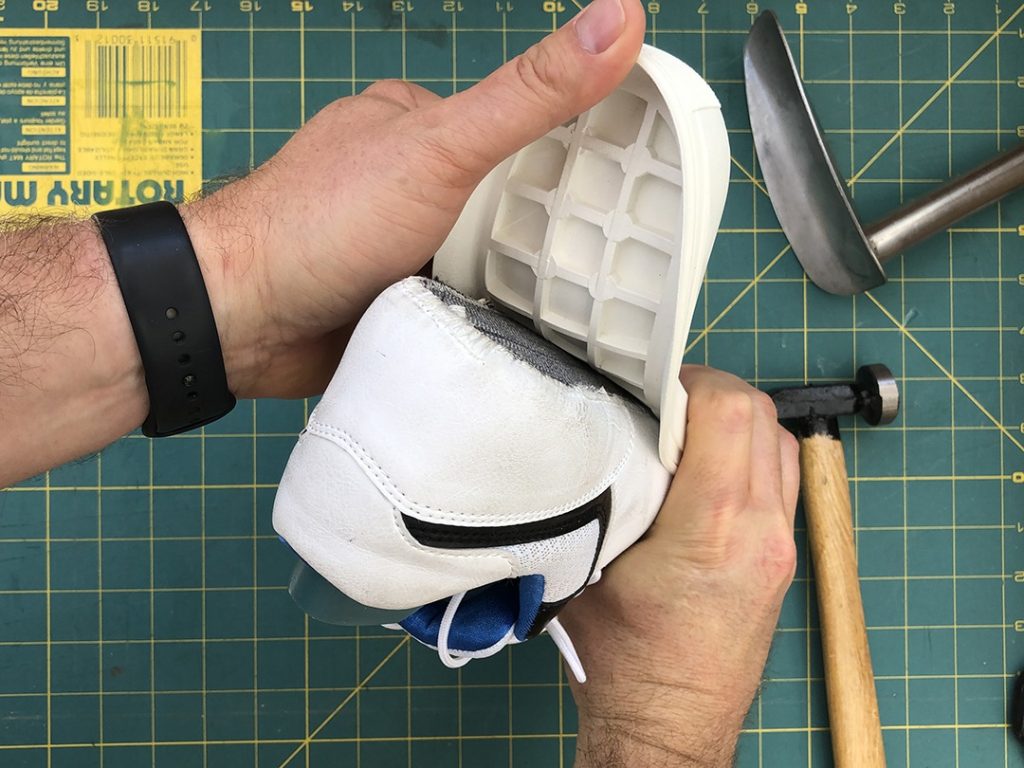
Check the upper width -
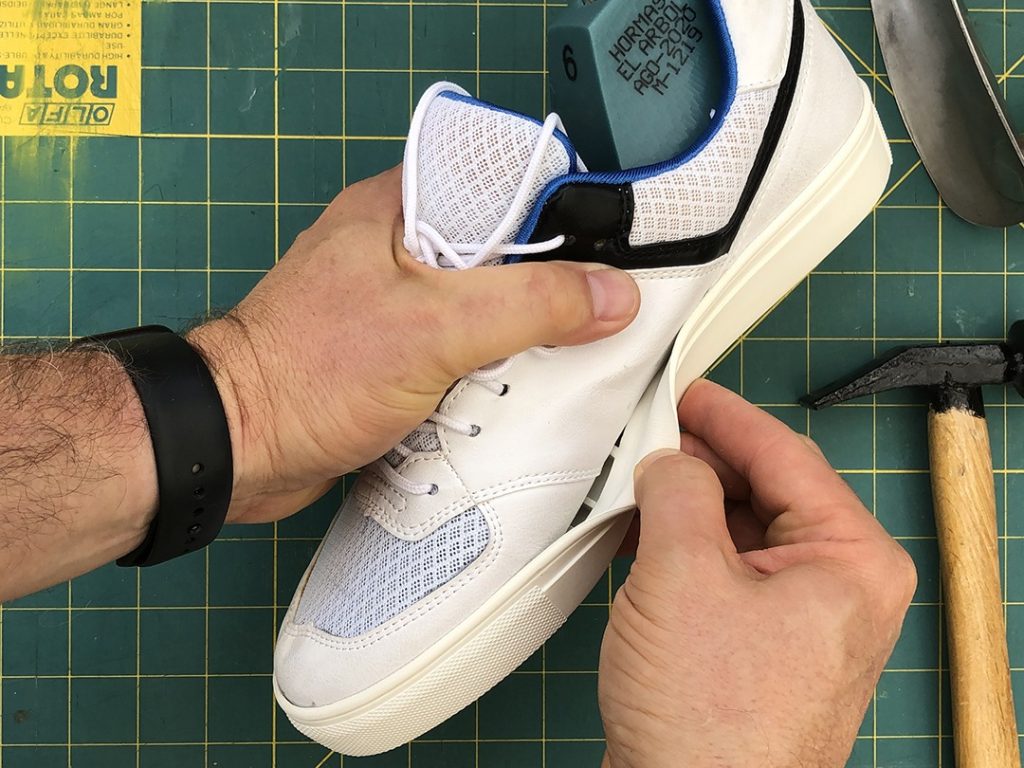
Is the upper seated?
Marking the upper
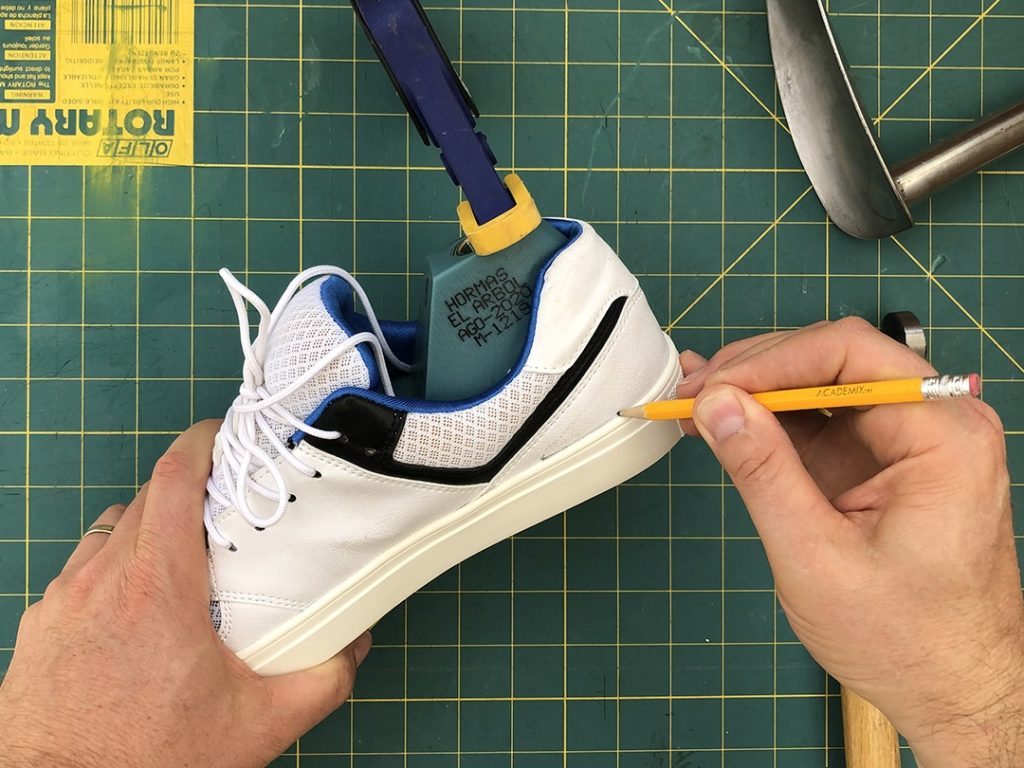
To prepare the upper, mark the bonding surface that will be in contact with the rubber sidewall. In the factory, a worker uses a press to hold the parts together. You can use a clamp, rubber bands, or a tabletop. Firmly press the sole and upper together and, using a pencil, lightly mark the edge. This is the cement line.


How to use the cement line
The cement line shows you where to rough your upper and apply shoe cement. Depending on the upper material for your shoe, you may need to rough (or buff) the bonding surface. Suede and mesh materials don’t require buffing. Smooth leather and PU leather materials will require some roughing to ensure the primer and cement penetrate the materials. Following the cement line, use sandpaper or a rotary tool to lightly buff the material’s surface. Be careful not to grind too much or damage the stitching. You must never rough above the pencil line, as this will show after the sole is attached.
Roughing the outsole
While you have your roughing tools in hand, it’s a good idea to rough the inside surface of the outsole unit. After you have roughed the upper and outsole, you must clean away any dust. Use a vacuum, high-pressure air, or dry towel to clean all the parts. You must remove any dust for the bondings surfaces.




Priming your shoe parts
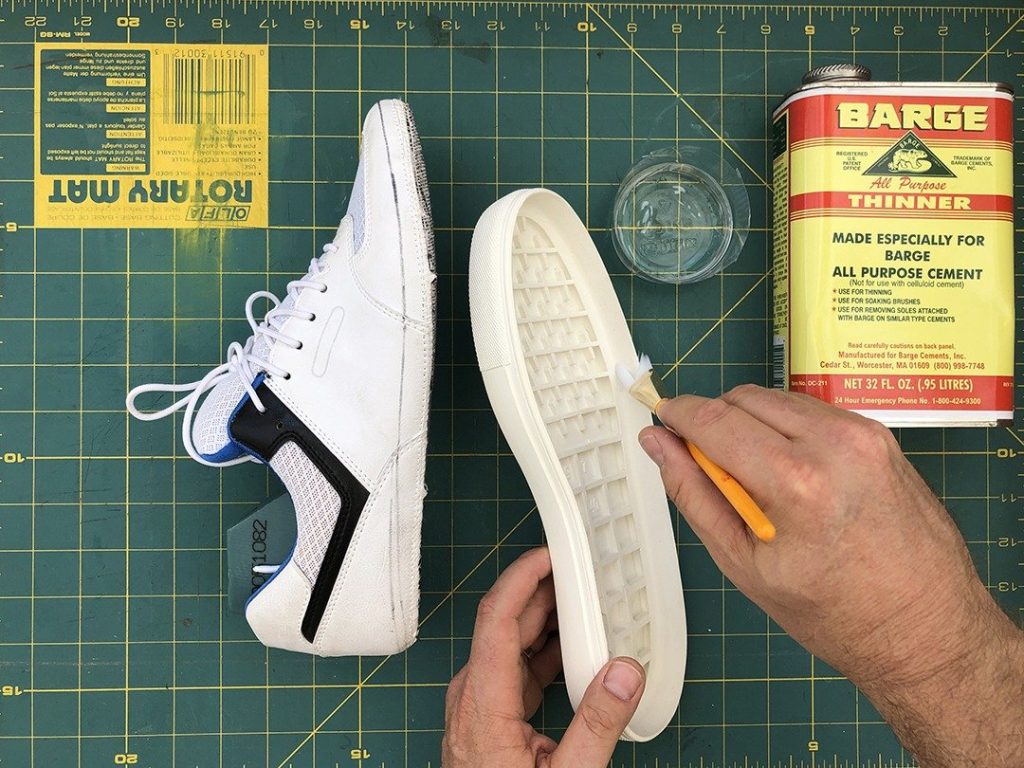
Primer is a mixture of shoe cement and cement thinner. You must test it first to make sure you have the correct thinner for your cement. The idea is to thin the cement into a liquid that can penetrate the upper materials and the surface of the rubber parts. Try a mix of 50% or even 75% thinner.
Coat the bonding surfaces of the upper and outsole with the primer, let it dry for a few minutes, and prime again.
The shoe factory will use a different primer for the rubber and upper parts but for our DIY shoe project we can use the same primer mix for both.



Cementing
Once the primer coats on your outsole and upper are completely dry, you can apply the cement. Follow the same procedure and apply multiple light coats of cement to both the upper and the outsole. Again, be careful not to cement above your line.
Now, wait! On a hot, dry day in California, the cement will dry to the touch in just a few minutes. If you are working in a cool, damp London studio, you may need to add a little heat to dry the cement. Be patient! DO NOT put wet parts together.
A word about shoemaking contact cement
The cement we are using is not like Elmer’s glue, epoxy, Superglue, or other types of glue you may have used. We are using CONTACT cement. What does that mean?
Contact cement must be dry when the parts are brought together. The cement has already bonded to the parts and when we bring the parts together we are bonding the cement to itself “on contact.” If the cement is wet and the parts can slide against each other the bond will not be strong.



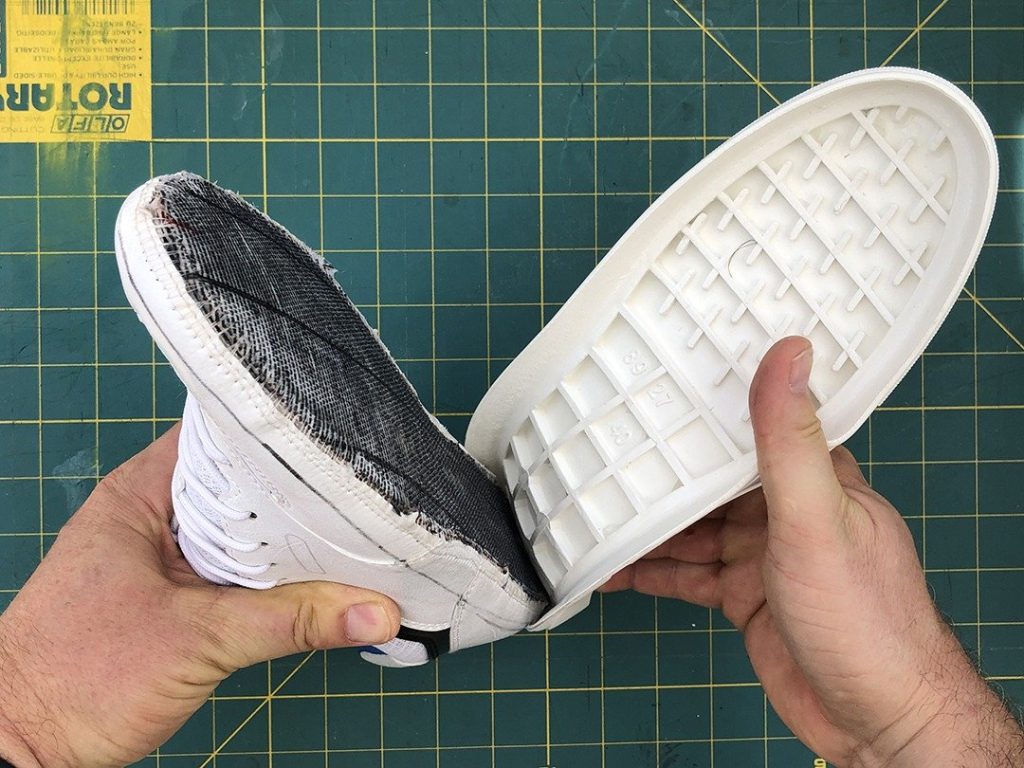
Assembly
When the parts look dry, test the surface with your fingertip. The cement should be tacky but not wet. Now, the tricky part. Starting at the heel of the shoe, bring the parts together. We are using CONTACT cement, so the goal is to press the parts together and not slide them against each other. Getting the heel lined up straight is critical to getting the sole application right.
Start by touching the heel down into the sole. To do this, bend the rubber sole backward and try to keep the side walls “open” as you apply the sole to the upper. It is a good idea to practice this assembly procedure with dry parts, so you feel how to do it. Next, work your way from the heel to the toe. Don’t press the sidewalls yet.
Before you press the sidewalls, it is a good idea to press the bottom down hard onto your work surface to ensure the upper is fully seated in the sole. If you see the sidewall is below the marked line,
carefully peel back the sidewall and push it into place once the bottom edge is seated.







Fitting and pressing the parts together
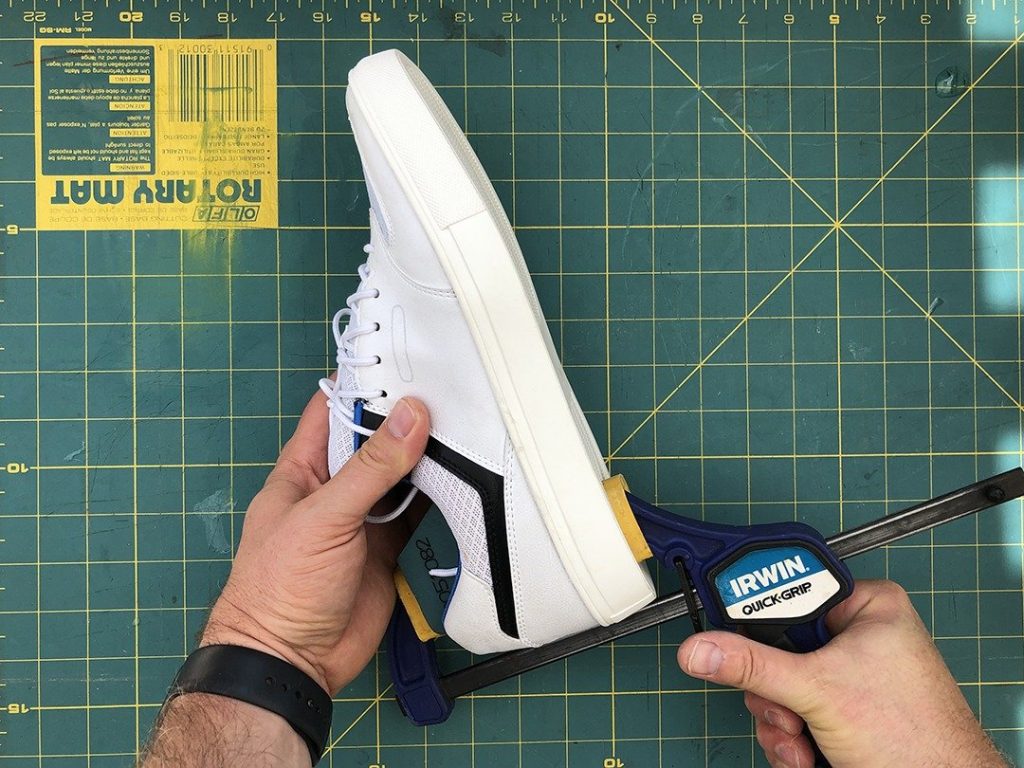
In the factory, they use a press; we can use clamps, a hammer, our thumbs, and tape to make sure the sidewall is in full contact with the upper. If you see any gaps you can peel back the upper and apply more cement. Make sure to hold the sidewall back for a few minutes to let the glue dry. Press firmly. Now relax and let the glue cure.



Removing the last from the upper
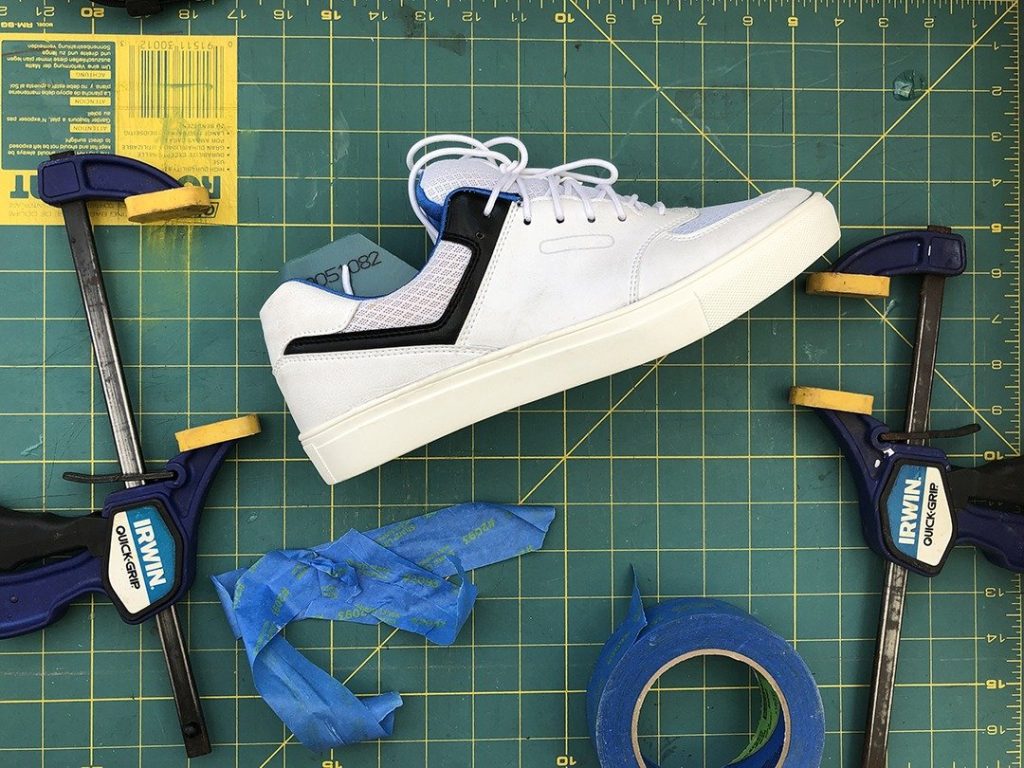
With the upper cooled and the glue cured, it’s time to remove the last. For sports shoes with open eye stays, simply loosen or remove the laces and push the last out from the bottom. For leather shoes with solid vamps, “break” the last on the hinge and remove it. Many shoemakers drill a hole and thread a cord thru the last to create a handle. Then, they use the cord to pull the last out of the shoe. For leather shoes, be very careful not to crease the shoe when removing the last.




Outsole Stitching Process

Stitching the sole
For a DIY sneaker project, it’s a good idea to reinforce the cement bonding with outsole channel stitching. You can stitch the toe, heel, or the entire perimeter to keep your sole fixed in place.
See the step-by-step channel stitching process here.

